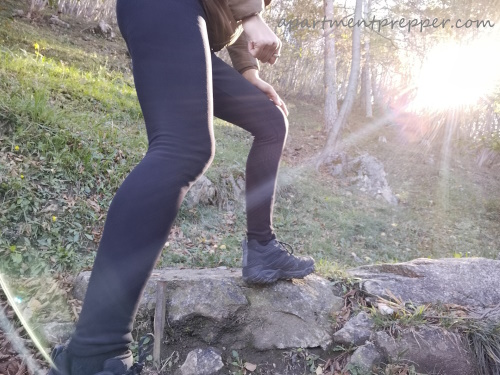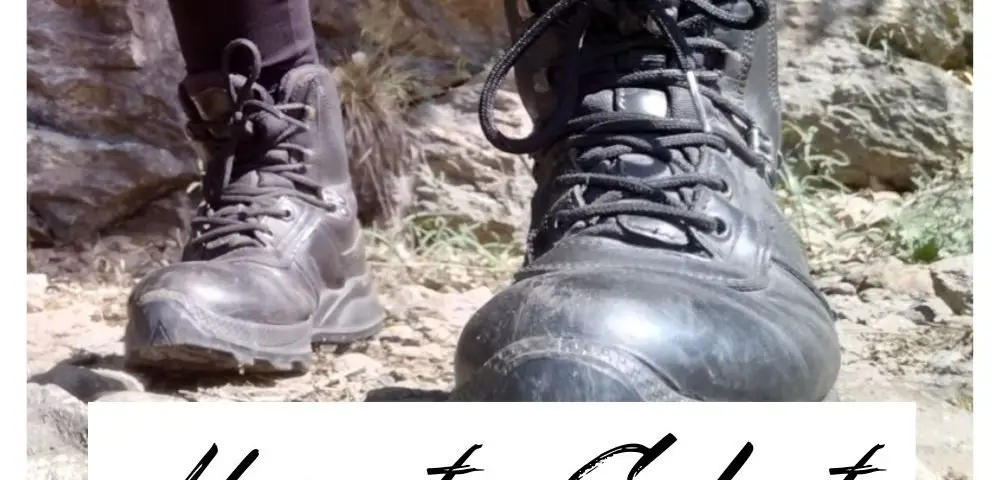We covered how to select clothing – jackets a couple of weeks ago; this week, we look at another often neglected survival gear, footwear.
How to Select the Best Footwear for Preppers
by Kyt Lyn Walken
It’s critical to discuss gear and equipment capable of responding to practicality, functionality, and efficiency criteria if an emergency situation arises caused by hazards, environmental disasters, urban warfare, and so on.
By that saying, we need to discuss a topic that often remains massively underrated: footwear.
First things first, it is necessary to discuss some basic considerations, discriminating between critical issues of a personal nature but also among different seasons, climates, altitudes, terrain morphology, and landforms.

Selecting the proper footwear for preppers: essential considerations
There is nothing more personal than choosing the right footwear that we would like to wear in a time of danger.
In fact, each of us has not only peculiar physical characteristics, but also distinctive elements which correspond to congenital or temporary disabilities, but also to the way we walk that can mainly affect the heel or, on the opposite, the forefoot, the inside or the outside of the entire plant itself.
Our habits, the small – or big – pains, and mishaps that posture or our work have created for us, therefore, represent distinctive elements in the selection phase of the most suitable footwear for us.
However, there are critical requirements that should necessarily lead all our choices and they are versatility, reliability, sturdiness, and durability.
Alongside these requirements, it goes without saying that fit and comfort are absolutely essential.
If, in fact, the shoes do not fit your feet perfectly, the risk of incurring a condition of discomfort or, at worst, of suffering from painful blisters even capable of leading to infections remains very high.
You surely don’t want to become an issue to yourself or even to other people. You couldn’t afford the burden of becoming a weight!
Ultimately, it is necessary to underline that the aesthetic factor plays an essential role. If our mind is accustomed – or in complete line – with solid and even aggressive footwear aesthetics (I am referring especially to Tactical Boots) we will obviously consider them more suitable to carry out their task properly in a situation where every single step could make a difference.
Footwear structure
Beginning from the part which is close to the ground, and hypothetically continuing towards the ankle, we can find:
Upper:
The largest part of a shoe or boot that holds the foot up to the insole.
A rigid material is positioned immediately above the upper, sandwiched between the insole and the midsole. Referred to as a “shank,” and often made from nylon poly, it provides support and stability.
Rand
The rand (“rim”) is a strip of material (usually rubber) that wraps around the shoe where the midsole and upper meet; provides additional protection in difficult terrain.
Sole
The sole is the part that is in direct contact with the ground.
Midsole
The layer (usually some type of foam or ethyl vinyl acetate) that sits between the midsole and the outsole. It represents the most significant part of the shoe, as it determines the cushioning and shock absorption, ensuring general stability.
Insole
The insole is the thin material at the bottom of the inside of the shoe where the foot rests; for several years it has been made of ventilated material to ensure breath-ability.
Membrane
The membrane is usually present in windproof and waterproof materials, breathable, it represents the part in which the rest of the foot and the ankle are wrapped.
On materials
In recent decades, the evolution of the study of physical and chemical processes linked to weather conditions led to the design and production of increasingly avant-garde materials.
New technology, in fact, brought to the creation of some new typologies of foams, along with synthetic fabrics, rubber, and, obviously, leather is used extensively to provide comfort, cushioning, support, protection, and long–term durability.
Breathable waterproof membranes, such as Gore-Tex, provide a barrier from the elements through reduced pores to prevent water from penetrating.
The different applications foreseen by a given shoe are not only linked to the specific characteristics of the shoe in question, but also to the design, the materials employed, and, above all, the needs that a particular situation can – and must! – dictate.
Terrain
Discriminating between urban and suburban areas, dominated by substrates such as concrete, asphalt, tar, cobblestones, tiles, and outdoor areas where instead earth, mud, and sand are predominant, the type of terrain that everyone most commonly expects to encounter and the challenges offered from it will greatly influence our selection of the most suitable footwear for preppers.
Climatic conditions
Not all footwear can adapt to the different seasons, as well as to altitudes and the relative morphology of the land. As a mantracking Instructor (reading, identifying, and following human footprints), I often find myself stressing this concept.
It is therefore necessary to carefully study the final destination as well as the entire journey that will lead us to it.
On a general level, some footwear particularly suitable for cold climates is badly suited for use in urban or suburban areas, on pain of short-term erosion of the tread that the sole presents.
Conversely, some shoes designed for warmer climates cannot find a good application in areas above a thousand meters. The right compromise is possible but always starts from a prior study of our itinerary.
My personal selection
This paragraph will only deal with the most suitable and versatile footwear for a prepping scenario. The worldwide market offers a wide variety of footwear: you just need to know the peculiarities of each one of them to place the best selection for your needs. Personally speaking, my first choice always goes for Military Boots. In the second instance, as backup shoes, I would rather go for trail shoes.
Military boots
In this case, my choice goes to Police Patrol Boots 01 as well as to Military Protection Boots. I like the Danish brand “2be Footwear“.
Needless to say that military boots have a more aggressive and consistent design which is possible due to the employment of thicker, stronger, and more reliable materials.
This is a guarantee for durability, protection of your ankles as well as stability.
These kinds of boots are surely less comfortable for walking, but new technology managed to create a proper balance between stability and flexibility, offering a really good deal either with warm temperatures or with cold ones.
Military boots are supposed to protect you, especially with extreme weather conditions, debris, and harsh bushes.
Trail shoes
I personally go for Merrell Moab 2 mid-GTX tactical but also for Prolight Performance Shoes by 2be Footwear.
They can be considered a sort of very versatile hybrid shoe, lightweight as sneakers but with an excellent grip on the terrain.
I tested them several times on the craggy slopes of the Alps, Mojave desert, and central Texas and they never disappointed me.
Conclusion
Whatever type of footwear you select, you must take the appropriate time to break it in.
Synthetic and suede materials tend to require the least amount of testing, while leather takes significantly longer to adjust to our feet.
Start with short journeys up to longer itineraries (and several days), especially on varied terrain, with loads on the shoulders, and with different weather conditions. Only after several days of wearing will we actually be able to say we are satisfied with having chosen one or more totally reliable shoes for a prepper.
About the author
Kyt Lyn Walken is Official Representative and Instructor for Hull’s Tracking School (Virginia) and Antipoaching Certified Ranger for Conservation Rangers Operations Worldwide Inc. (Colorado).
She’s a long time Prepper and Survivalist and she wrote several articles and essays on this topic.
If you found this article interesting or helpful, please consider helping us out (without costing you anything)! We are an affiliate of Amazon.com, which means we received a small commission if you click through one of our Amazon links when you shop, at totally no cost to you. This helps keep the lights on at the blog. Thanks!
Photo by Kyt Lyn Walken


